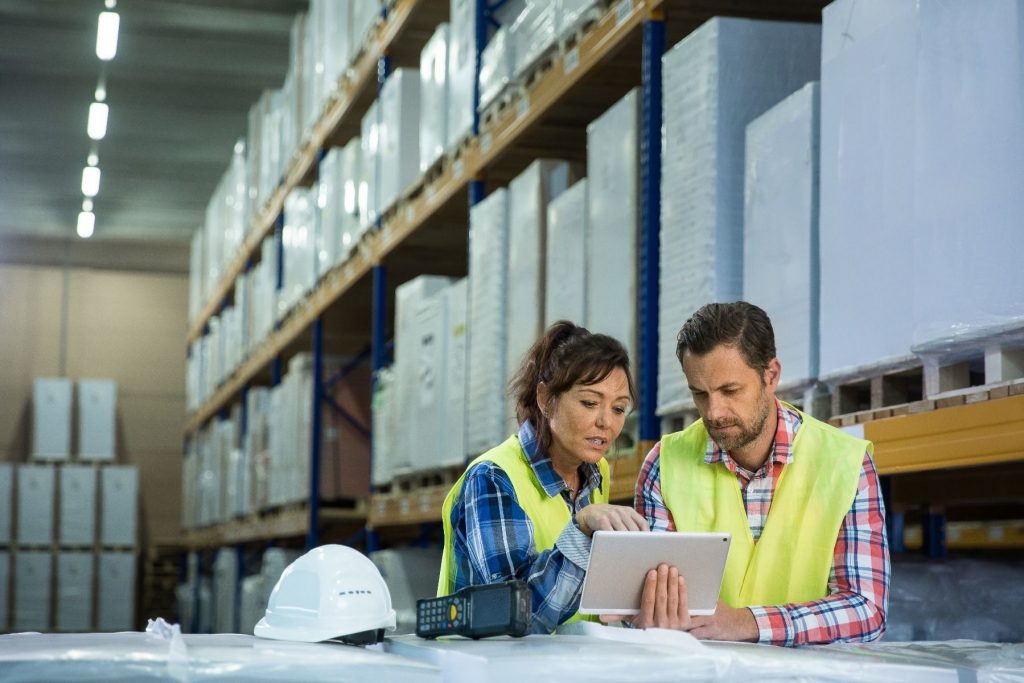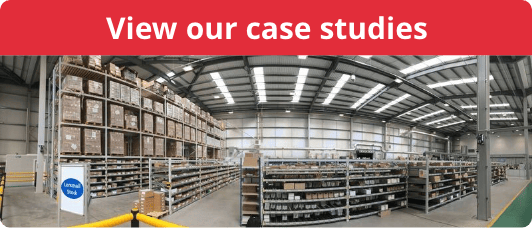Warehouse Automation and The Human Touch
Warehouse Automation and The Human Touch
Warehouse Automation and The Human Touch
Warehouse Automation and The Human Touch
Warehouse automation is one of the biggest challenges facing our business world today.
 Whether commercially run, operated by government, charities or NGO’s, storage and distribution centres across the world all have the same goal in mind. That is to run fast, efficient, high quality processes safely and cost effectively in order to increase output, profit, and end user experience.
Whether commercially run, operated by government, charities or NGO’s, storage and distribution centres across the world all have the same goal in mind. That is to run fast, efficient, high quality processes safely and cost effectively in order to increase output, profit, and end user experience.
Although warehouse automation is nothing new it is certainly something that you should be utilising if you’re not already. Read on and discover how you can find out exactly how you could benefit.
Where it All Began
Unprecedented advances in technology have become a game-changer for businesses that want to become market leaders and industry competitive. Why has this happened? Four reasons really; better communications, information sharing, greater collaboration, and the merging of great minds.
The adoption of automating technologies that led to mass production in factories was first led by American businessman Henry Ford in 1909. Through a combination of technological knowhow, innovative ideas, and working practices, as well as respect for co-workers, colleagues, and customers, the Ford car company grew from a small local company into one of the largest industrial companies world-wide.
Not only did Ford set the bar high for fast, efficient, highly profitable processes, he also campaigned for fair wages and work conditions for his workforce, understanding that improved standards of living were essential to effective production.
Automation Trends
In recent years we have seen a shift with warehouse services merging. In a bid to achieve improved efficiency from picking and packing through to distribution, warehouse managers are increasingly turning to automation.
In fact, there are a wide range of automation tools out there to choose from, from direct order placement at the press of a button to collection and delivery by autonomous transport systems. It is also seen that automation is releasing human beings from tedious and repetitive tasks which Ford recognised as necessary over a century ago.
Whether adopting semi or fully automating processes, there are a host of household names that have reaped the rewards from their commitment to tech, robotics, and logistics. Find out more below and take a look at some of the top 10 automated warehouses
- Coca Cola – Operating a fully automated process from one supersized warehouse, Coca Cola store over 25,000 pallet locations. By centralising storage and using logistics to manage orders and distribution, efficiency savings are substantial through the simplicity of operation via central locations.
- Ikea – As a Swedish home products manufacturer, Ikea has adopted automated warehouse solutions to become the leading furniture logistics company delivering household items to retail outlets and worldwide.
- Fedex – Operating a super hub to connect 4,000 employees by day and 8,000 by night their processing is aided by 300 miles of conveyor belts to help support 3.3 million packages at Memphis International Airport.
- Nike – The sports giant handles 43 million items per annum operating a warehouse with uniquely coded product ranges, enabling accurate stock taking/inventories and efficient order fulfilment.
However, many jobs are becoming redundant and experts are suggesting the introduction of a “robot tax” to ease the transition of employees to new areas of employment and roles in the community.
Is Automation for You?
On a smaller scale there are a few main trends afoot to help streamline future warehousing processes which will likely include:
- Ergonomics – Ensuring loads can be stacked and retrieved from greater heights by machines, maximising storage capacity and safe retrieval..
- Storage Configurations – These are evolving to support automated processes in the form of collapsible, dividable, reusable totes and boxes, making custom designs more redundant.
- Standardised Tote Boxes – The design and manufacture of these products will save on design, engineering and project management costs associated with custom totes by providing industry wide solutions for lower capital investment.
- Tractability – The process of tracking orders where customers become actively involved in monitoring the progress of their order from point of sale to point of delivery. Radio frequency tracking and warehouse management systems are set to become commonplace in warehouse automation.
Resolving Automation Dilemmas
Many visionaries say the opportunity for growth is only limited by our own imagination.
The starting point is to know your values, your resources, and your limitations. Knowing your organisation requirements is essential to realistically determine the size of investment required and the number of implementable changes possible to calculate the potential returns on that initial investment.
What’s clear is that technology, consumer demand, and competition is radically changing and you’ve got to embrace the changes to compete in a rapidly changing market.
If you’re looking to improve your warehouse processes - whether you’re adopting full automation or indeed pallet racking systems, partitioning, or workbenches - get in touch with the team. Give us a call on 0117 955 5211 for more information.

